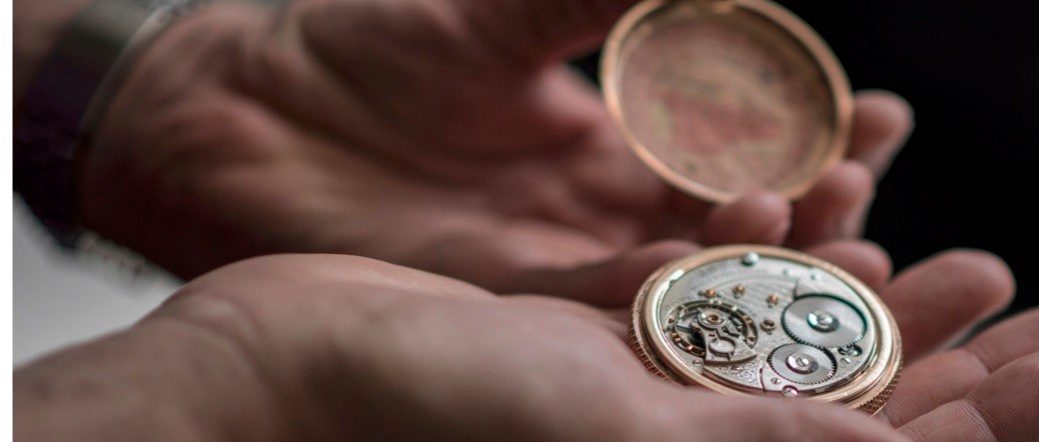What’s not to love about a good ole vintage alarm watch? In my opinion, this type of complication in a mechanical watch is one of the coolest there is. It’s also one of the most useful. I know how much I use the alarm on my cellphone but this alarm is a lot more fun. I enjoy interacting with my watches and this is why I like chronograph watches too. It not just a thing that we sit back and watch work, but it’s something we can program and engage with.
This piece came across my desk as non-functioning. I was able to tell pretty quickly that the reason the watch stopped was a broken tooth on the ratchet wheel. This is the big and thin wheel that sits on top of the mainspring barrel and winds and locks with a click and holds the power from escaping. If this wheel is broken, the power can’t hold and therefor the watch won’t work. Often when I repair a watch, this part requires replacement.
Once I replaced this part and gave the watch a much needed cleaning, it came to life beautifully. No other major repairs or adjustments were needed. This movement is indeed, very nice to look at. The gold setting for the jewels are a nice touch.
The alarm complication is its own brain in the watch. It has its own mainspring and escapement and sits adjacent to the regular gear train and regulating system. When the hour hand passes over the alarm hand it unlocks the held power of the alarm spring and sends the hammer a buzzing. This hammer vibrates against a small post that sits on the caseback and if you have sensitive teeth you may feel it in your head. These alarms on your wrist, can be quite startling if you’re not expecting it. Let’s just hope you’re not holding a hot cup of coffee or you might ruin that new shirt.

the underside of the dial. Two crowns wind 2 mainsprings. 
the alarm hammer is just to the right of the balance wheel. 
The post that sits on the underside of the caseback that engages with the alarm hammer.

